Anna Golden: Atelierista (Studio Teacher)
Anna has been teaching at Sabot at Stony Point since 1996. She went to unconventional schools growing up and has never stopped trying to figure out how people learn. She studied photography and printmaking, K-8 education, and art education. Anna is a volunteer for community radio, teaches teachers at Mary Baldwin College, and is an artist working in paint and mixed media. Anna’s Atelierista blog is read by educators and people from around the world who are interested in progressive education. Her whole family are artists and musicians. She and her husband feel rather surprised that their daughters are both in college now.
sabotatstonypointumbrellaproject.blogspot.com
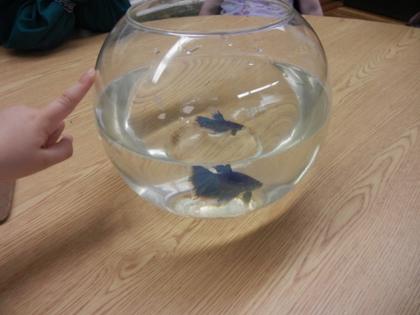
Órla Kelly: What is your background and training?
Anna Golden: I come from a very creative family, who encouraged me to make things and study art my whole life. As a teenager and through college I concentrated on photography. After that I have worked in mixed media, making paintings, sculpture and prints. While working in commercial art I studied elementary education before starting to work at Sabot school. Later I got a Master’s degree in Art Education.
Órla Kelly: The theories and practice of Reggio Emilia are not very familiar to artists in Ireland and although known in general by early years educators are not fully understood and seldom practiced intentionally or fully. The concept and practice of the Atelierista is even less known. Could you explain briefly the principles of Reggio Emilia as applied in your school and your role as Atelierista?
Anna Golden: One really important inspiration from Reggio is the idea of the teacher-researcher, someone who is just as interested in learning every day as in teaching. As an artist I am used to noticing things, wondering about them, and then playing with answers through art. For me, teaching in this way is similar. I try really hard to pay attention and listen deeply to the children and other teachers. All of the teachers spend time thinking about questions. Just the right question can propel a project forward- what question will help the children look more deeply into this idea? I have questions for myself as a teacher, for other teachers, and I bring questions to the children. We believe that new understandings grow through collaboration, dialog, and self-reflection.
The Atelierista is sort of like an art teacher, but instead of prizing technique, art history or expression above all, my job is to help children use art media to explore ideas or communicate their theories to the group. Reggio educators write about the hundred languages of children. These are the many ways children can show their thinking. The Atelierista helps children find languages for themselves. First, I provide (or I help a teacher provide) materials for children to mess about with. Once a child plays with a medium enough, they start to learn what it can and can’t do. So a child might mess about with clay for some time, and I might show them some techniques to use it even better, and then they might start to understand how to make clay do what they want. Clay becomes a language for the child once they can use it to show their ideas or to test hypotheses. In this way I help the children and also the teachers to learn about media and materials.
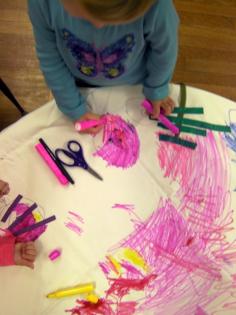
Órla Kelly: What is your most important function within the school as Atelierista?
Anna Golden: My most important role is to help make ideas visible. That means, I help children and teachers learn to use media and materials, and how to collaborate. There are a lot of habits of mind that become important when you want others to understand your ideas. For instance as Atelierista, I can help teachers create documentation from their reflections and observations, which can be writing, sketches, photographs or video. This documentation is a visible trace of the children’s and teacher’s work together, and can be used to inspire further investigation and dialog. It is also used to communicate with the school community and others.
Órla Kelly: I am interested in the value the Reggio Emilia philosophy puts on creativity and allowing a natural exploration by the child, where the artist is the enabler rather than a direct teacher. With your knowledge and experience how important is creativity to the development of the young child?
Anna Golden: I think it is vitally important. Young children embody creativity, often you just have to provide some materials and step back, and they will show you so many things about what they’re discovering about the world. I’ve always been so interested in the way contemporary artists use art to explore ideas, and this is the same way the schools in Reggio Emilia use art.
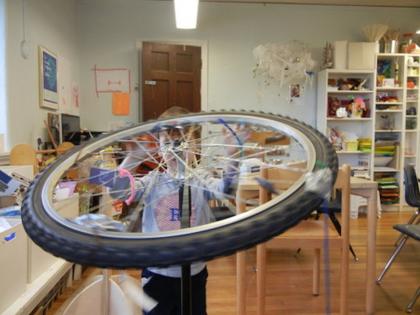
Órla Kelly: Could you tell us a bit about the process of creating with children; Is it a collaborative process with the children and the other teachers, or do ideas come directly from you? How important is your reflective practice in this process?
Anna Golden: It’s a little of both. Sometimes I follow a child or group of children’s lead, sometimes an investigation builds collaboratively, and still other times it is teacher initiated. The reflective practice is so crucial- it is the way you process all of the things that you observe. And then it is through reflection that you decide or try to predict what will happen next.
Órla Kelly: Is it important to you, as an artist, that what you contribute and the role you play within the school setting is respected and is seen as core to the development of the child and not just an add on? (Is there much collaboration between you and your pedagogical colleagues?)
Anna Golden: Oh,that is the most important thing of all. If the role of the artist isn’t respected in the school, then what happens in the studio is just a separate thing that doesn’t add any new understandings or ideas to the community. I might as well just stay home. However, collaboration is the hardest thing to achieve because there is never enough time. I think the teachers who have really seen what a difference studio practice can make to the children’s learning are the most committed to figuring out the collaboration.
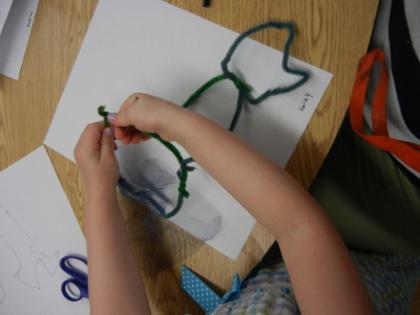
Órla Kelly: What is the most rewarding thing about being an Atelerista?
Anna Golden: Working in this way just suits me so well, bringing together everything I like- art, research, the energy of children. I enjoy the study and research that it takes to teach in this way. I get to engage in deep, passionate conversations with other teachers and with children. And I love the challenge of scaffolding all kinds of different ideas and all kinds of different media, crossing over the boundaries between disciplines.
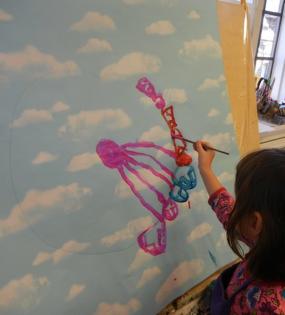
Órla Kelly: Could you outline a recent favourite project that you carried out with children?
Anna Golden: I’ve been working with children in a couple different classrooms who are thinking about the unseen- what happens inside of a body or in a dream? Projects that touch on poetic thinking and metaphor capture me the most lately. I also really love to work with rough and tumble players in the studio. Right now a group of boys are looking at a Ninja story that is very popular right now, and comparing elements of it to other stories like Greek and Norse myths.
For visuals please visit:
atelierista-anna.blogspot.com
sabotatstonypointumbrellaproject.blogspot.com
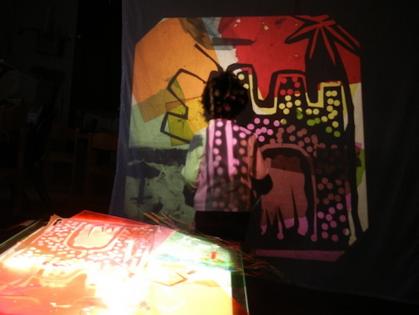
Órla Kelly: Could you tell us a bit about the Friendly Sign Project? (I love this idea!)
Anna Golden: Last school year there was a lot of construction around our school, and many, many orange no parking signs to keep areas clear for construction vehicles. The signs really bothered me, so one day I told a group of four year old children about that, and asked them if they could think of any ideas for some friendlier signs we could put up. Their ideas were so wonderful it made me wish we could put them up all over the city. I’m working on the project again with a couple of groups at Sabot, and now some other children and teachers have taken up the challenge to try making friendly signs at their schools. It’s so exciting!


No comments added